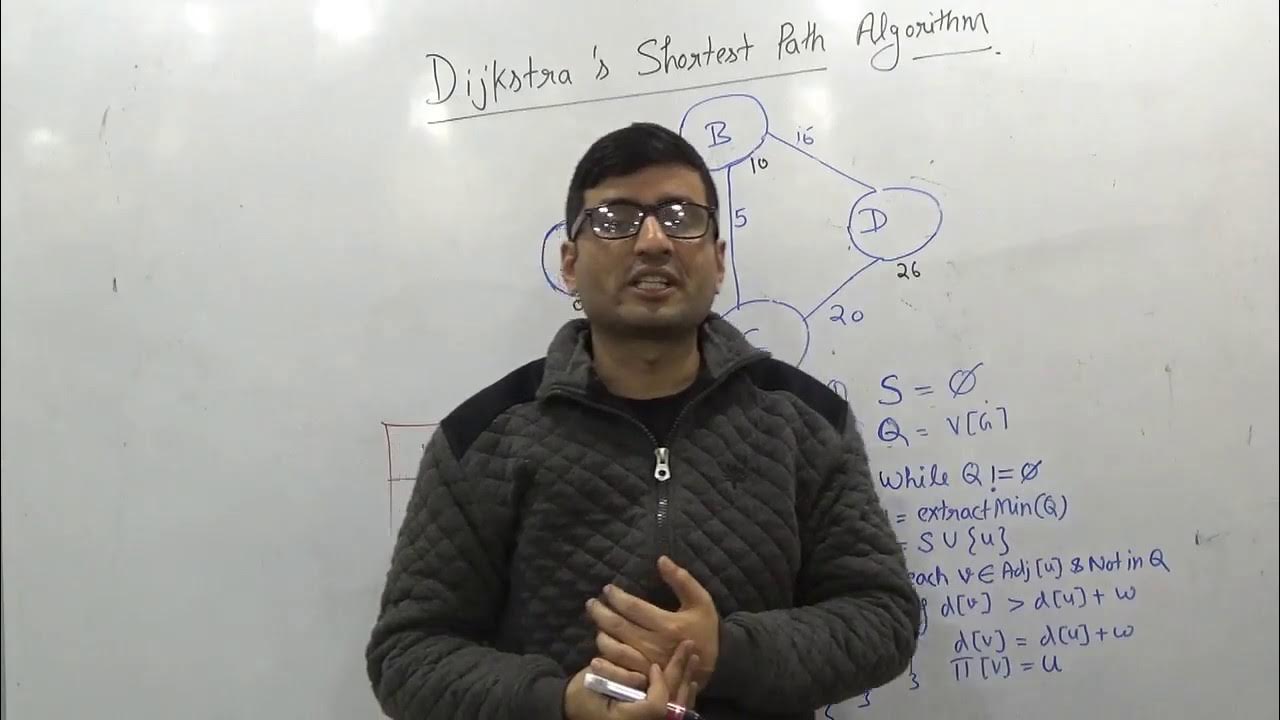Learn Quick Sort in 13 minutes ⚡
Summary
TLDRIn this video, the quicksort algorithm is explained in a casual and engaging way. The narrator demonstrates how quicksort sorts an array by selecting a pivot, partitioning the elements into those smaller and greater than the pivot, and recursively sorting the partitions. The script covers the step-by-step process of implementing quicksort in code, along with its time and space complexities. The best and average case runtime is O(n log n), but in the worst case, it can degrade to O(n²). The video concludes with an interactive coding demonstration to solidify understanding of the algorithm.
Takeaways
- 😀 Quicksort is a divide and conquer algorithm that works by sorting elements based on a pivot.
- 😀 The pivot in quicksort can be chosen from the beginning, middle, or end of the array. Most commonly, it's chosen from the end.
- 😀 The main goal is to find the final resting position of the pivot, such that all elements to the left are smaller and all elements to the right are greater.
- 😀 Two indices, `i` and `j`, are used to traverse the array, with `i` tracking the position for smaller elements and `j` traversing the array.
- 😀 Elements smaller than the pivot are swapped with elements greater than the pivot, ensuring that they end up on the correct side of the pivot.
- 😀 After placing the pivot in its correct position, the array is divided into two partitions, and quicksort is recursively called on each partition.
- 😀 The process of partitioning and recursion continues until the subarrays can no longer be divided.
- 😀 The quicksort algorithm is implemented in-place, meaning that the array is sorted without creating additional subarrays.
- 😀 The base case for the recursion is when the `start` index is greater than or equal to the `end` index.
- 😀 In terms of time complexity, quicksort generally runs in O(n log n) but can degrade to O(n^2) in the worst case if the array is already sorted.
- 😀 The space complexity of quicksort is O(log n), due to the use of recursion in managing the call stack.
Q & A
What is the primary purpose of the quicksort algorithm?
-The primary purpose of the quicksort algorithm is to sort an array or collection of elements efficiently using a divide and conquer approach.
How do you select a pivot in the quicksort algorithm?
-In the quicksort algorithm, the pivot can be selected from the beginning, middle, or end of the array. However, most standard implementations choose the pivot to be the last element of the array.
What are the roles of the indices 'i' and 'j' in the partitioning process?
-'i' is used to track the position where the next smaller element than the pivot should be placed, while 'j' iterates through the array to compare each element with the pivot.
What is the significance of swapping elements in the quicksort algorithm?
-Swapping elements is crucial in quicksort because it helps to organize the elements in such a way that all elements less than the pivot are on its left and those greater than the pivot are on its right.
How does the recursive nature of quicksort affect its implementation?
-Quicksort is implemented recursively by dividing the array into two partitions based on the pivot and then applying the quicksort function to each partition until the base case is reached, which stops further division.
What is the base case in the quicksort algorithm?
-The base case in the quicksort algorithm occurs when the ending index is less than or equal to the starting index, indicating that the array cannot be divided further.
What are the time complexities of the quicksort algorithm?
-The average and best-case time complexity of quicksort is O(n log n), while its worst-case time complexity is O(n²), which can occur when the array is already sorted or nearly sorted.
What is the space complexity of the quicksort algorithm and why?
-The space complexity of quicksort is O(log n) due to the recursion used in the algorithm, which adds frames to the call stack, even though the sorting is done in place.
How does quicksort differ from merge sort in terms of array handling?
-Unlike merge sort, which creates new subarrays for sorting, quicksort sorts the elements in place without the need for additional arrays, using indices to manage partitions.
What should be done after identifying the final resting place of the pivot in quicksort?
-After identifying the final resting place of the pivot, the algorithm increments 'i' and swaps the pivot with the element at index 'i', ensuring the pivot is in its correct position.
Outlines

Esta sección está disponible solo para usuarios con suscripción. Por favor, mejora tu plan para acceder a esta parte.
Mejorar ahoraMindmap

Esta sección está disponible solo para usuarios con suscripción. Por favor, mejora tu plan para acceder a esta parte.
Mejorar ahoraKeywords

Esta sección está disponible solo para usuarios con suscripción. Por favor, mejora tu plan para acceder a esta parte.
Mejorar ahoraHighlights

Esta sección está disponible solo para usuarios con suscripción. Por favor, mejora tu plan para acceder a esta parte.
Mejorar ahoraTranscripts

Esta sección está disponible solo para usuarios con suscripción. Por favor, mejora tu plan para acceder a esta parte.
Mejorar ahoraVer Más Videos Relacionados

L-3.1: How Quick Sort Works | Performance of Quick Sort with Example | Divide and Conquer

Quick Sort - Computerphile

02. Berpikir Komputasional - Optimasi Algoritma - Informatika Kelas XI

Numerical Example| Learn Cuckoo Search Algorithm Step-by-Step Explanation [3/4] ~xRay Pixy

Dijkstra’s shortest path algorithm | GeeksforGeeks

G-28. Shortest Path in Undirected Graph with Unit Weights
5.0 / 5 (0 votes)
